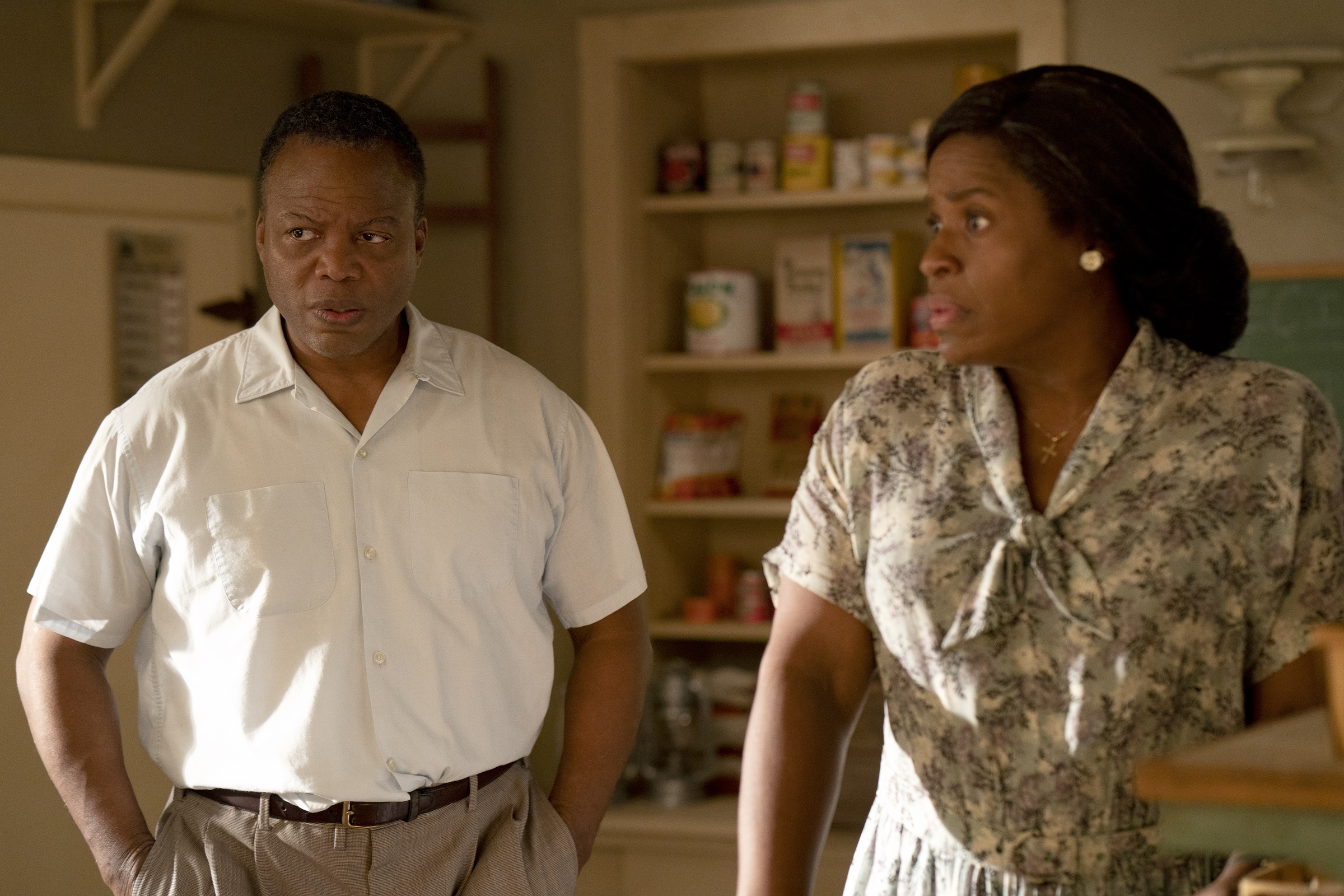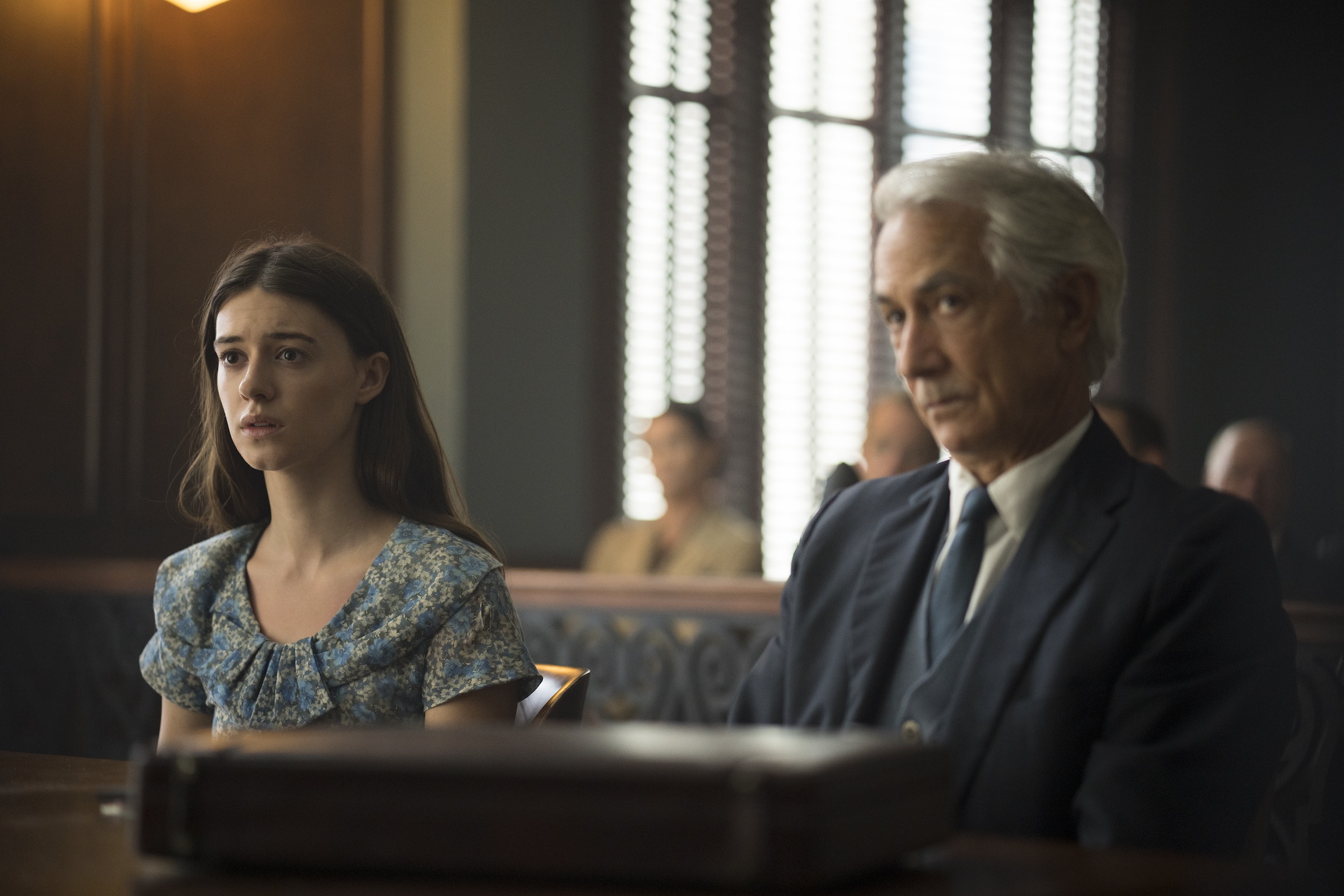In any story, a girl surviving on her own is a compelling figure for lots of reasons. She’s probably resilient and resourceful, and she defies norms without caring what others think of her. That right there is a thumbnail sketch of Kya, the heroine of Where the Crawdads Sing, the film adaptation of Delia Owens’ 2018 runaway best-seller. Kya Clark has lived alone in the North Carolina marshes for much of her young life, and even though this is the South of the 1960s, the locals eye her with suspicion that wouldn’t be out of place in 17th century Salem. They refer to her, so many times you could make a drinking game out of it, as “that marsh girl,” a pejorative always delivered with a gossipy hiss. She’s an individualist with the accent on the i, an island unto herself who doesn’t need any man—until the one who can truly understand her enters her fiercely guarded orbit.
As a character, Kya is so many fantasies rolled into one—a prickly, wholly self-sufficient being who’s still magnetic enough to attract a classic country hottie—that you’d think she couldn’t possibly fail, either on the page or in a movie. But Olivia Newman’s adaptation of Where the Crawdads Sing crawls along at such a self-consciously sideways pace that even those mystically crooning crayfish are likely to give up on it. Newman is clearly entranced with this material (adapted for the screen by Lucy Alibar), to the point where she seems to be tiptoeing around it, so eager to do it justice that she fails to give it any juice. Onscreen, Kya is so iconoclastically noble that she’s something of a bore, even though the talented actress who plays her as an adult, Daisy Edgar-Jones, tries to steer her into more subtle territory. This is a movie that seems to be striving to please a crowd, but its cornpone humility only becomes wearying.

Kya—played as a child by Jojo Regina—has never gone to school: she tries it once, but in her odd dress and bare feet, unable to spell even the word dog, she’s laughed out of the classroom. Her father (Garret Dillahunt) is an abusive drunkard who drives the rest of her family—mother, brothers and sisters—out of their shack-like house. Kya learns to survive by simply avoiding him, until one day even he disappears. With the help of a few kind humans—including Jumpin’ and Mabel (Sterling Macer Jr. and Michael Hyatt), the Black couple who run the grocery store in town—Kya learns how to take care of herself, ignoring the derisive whispers of the other townsfolk. She can’t read or write, but she’s deeply attuned to the natural world, using her mother’s left-behind watercolors to capture the essence of the mollusks, plants, birds, and insects around her. And though she’s happy enough in her solitude, she finds greater joy in opening up to the one man who truly understands her, Tate Walker (Taylor John Smith)—later to be replaced by a man who’s merely obsessed with her, the town football star and uncaring lug Chase Andrews (Harris Dickinson).
Read more reviews by Stephanie Zacharek
The movie opens with a dead body, promising one humdinger of a steamy Southern gothic. But Where the Crawdads Sing is too reverential, too tasteful, for that. Naturally, the townsfolk are certain that any murder in their locale has been committed by the marsh girl. (By now, you should be downing your second shot.) She’s put on trial, but at least she has a kindly country lawyer, played by David Stathairn, to represent her; he knows this misunderstood loner has been dealt a bad hand. The story cuts between that trial and the events leading up to it, including Kya’s fierce pushback during an attempted rape—there’s no doubt this girl is fearless, and playing her, Edgar-Jones has some of the understated spark of the young Holly Hunter. She knows how to tell us what her character is thinking without spelling it out in broad emotional semaphore—although the movie around her does a pretty efficient job of that.

Meanwhile, many of the other characters remain murky. The movie’s chief bad guy supposedly harbors at least a germ of human feeling—it’s broadly hinted at, in an attempt to make him multidimensional, but so clumsily handled that it makes no sense. Newman does know that Kya’s world of marsh and swamp, along with all its inhabitants, deserves special focus: the film has been beautifully shot by Polly Morgan, who pays keen attention to the wonders of natural light and the shimmering movement of birds and insects.
Yet the result is still drab and dumb. Reese Witherspoon, one of the film’s executive producers, had given Owens’ novel—her first, published at age 70—an early boost by choosing it for her book club. (The book and the subsequent adaptation have also become the subject of controversy, related to an incident from Owens’ past. Owens, her former husband, and her stepson are wanted for questioning around the 1996 murder of a poacher in Zambia, where they were working as conservationists at the time.) Witherspoon has called the book a “love letter to growing up in the South,” and the film appears to be striving for the same mood of nobility. But it could stand to be more florid; for a movie set amid marshes and swamps, Where the Crawdads Sing is surprisingly airless. Its protagonist can take care of herself for sure: She digs around for mussels, which she then trades for groceries and boat fuel. She has a cute wardrobe of second-hand clothes. She even snags a publishing contract! As an empowerment fantasy, this one is louder than the hum of a million cicadas. And still, it’s hard to buy a minute of it.
More Must-Reads From TIME
- The 100 Most Influential People of 2024
- Coco Gauff Is Playing for Herself Now
- Scenes From Pro-Palestinian Encampments Across U.S. Universities
- 6 Compliments That Land Every Time
- If You're Dating Right Now , You're Brave: Column
- The AI That Could Heal a Divided Internet
- Fallout Is a Brilliant Model for the Future of Video Game Adaptations
- Want Weekly Recs on What to Watch, Read, and More? Sign Up for Worth Your Time
Contact us at letters@time.com